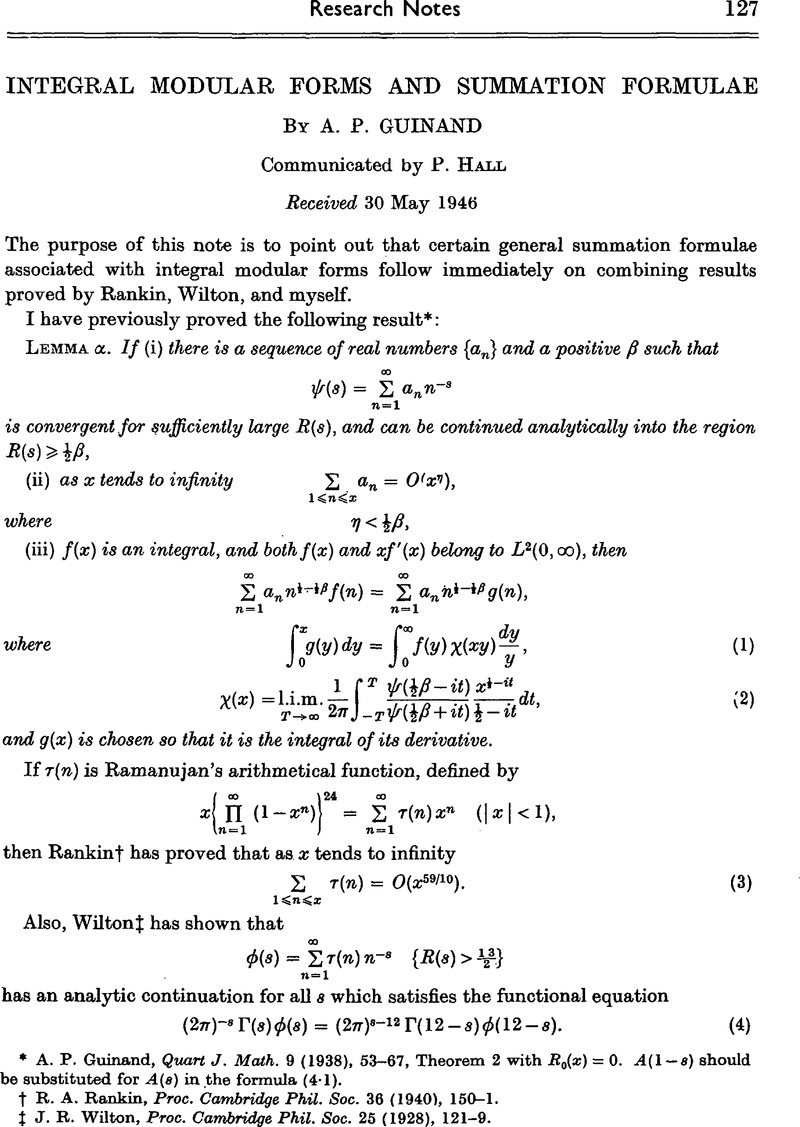Article contents
Integral modular forms and summation formulae
Published online by Cambridge University Press: 24 October 2008
Abstract

Information
- Type
- Research Notes
- Information
- Mathematical Proceedings of the Cambridge Philosophical Society , Volume 43 , Issue 1 , January 1947 , pp. 127 - 129
- Copyright
- Copyright © Cambridge Philosophical Society 1947
References
* Guinand, A. P., Quart J. Math. 9 (1938), 53–67CrossRefGoogle Scholar, Theorem 2 with R 0(x) = 0. A(1 − s) should be substituted for A(s) in the formula (4·1).
† Rankin, R. A., Proc. Cambridge Phil. Soc. 36 (1940), 150–1.CrossRefGoogle Scholar
‡ Wilton, J. R., Proc. Cambridge Phil. Soc. 25 (1928), 121–9.CrossRefGoogle Scholar
* Titchmarsh, E. C., Fourier Integrals (Oxford, 1937), 196.Google Scholar
† Guinand, A. P., Annals of Math. 42 (1941), 591–603CrossRefGoogle Scholar, Lemma 4. The present lemma is proved in the same way. We use the notation
‡ Loc. cit.
* A. P. Guinand, Quart. J. Math. loc. cit. Theorem 1. The dashes indicate that the terms n = x are to be halved if x is an integer.
† See E. C. Titchmarsh, loc. cit. pp. 265–7, where the method is applied to a similar problem.
‡ Hardy, G. H., Proc. Cambridge Phil. Soc. 34 (1938), 309–15.CrossRefGoogle Scholar
§ Walfisz, A., Math. Ann. 108 (1933), 75–90.CrossRefGoogle Scholar
- 7
- Cited by

